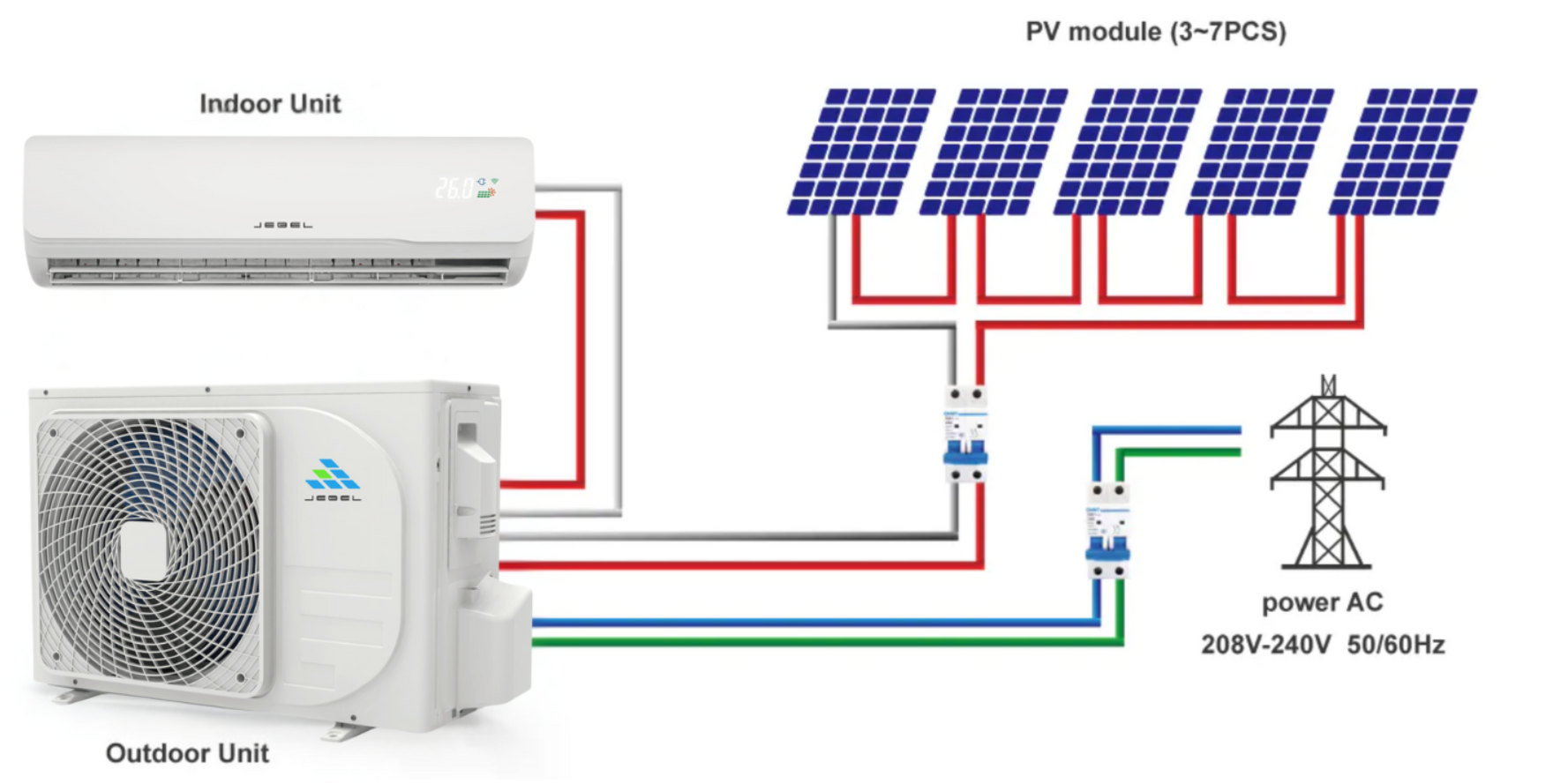Posted by Nastech on 4th Nov 2025
Solar Air Conditioners: Types, Benefits, and What to Know Before You Buy
For people living in arid and semi-arid regions, a solar air conditioner can be a game-changer: cooler homes, smaller electricity bills, and a cleaner footprint. But “solar AC” isn’t just one thing. There are a few different approaches, each with trade-offs. This guide breaks them down in plain English so you can choose what fits your home and budget.
The Main Solar Cooling Approaches
1) Solar Air Conditioner (SAC) — DC or Hybrid
These are purpose-built air conditioners designed to use solar electricity from PV panels. Two common variants:
-
DC Solar AC (Direct-Current):
Runs directly on DC power from solar panels during the day. Highly efficient because it avoids extra conversions. For night use or cloudy periods, you’ll typically add batteries. -
Hybrid Solar AC (AC/DC):
Blends solar DC with grid AC (or a generator). In good sun, the system draws mainly from PV; when the sun drops or demand spikes, it automatically draws from the grid. Optional batteries can keep the system running on solar after sunset.
Why people choose SAC: High efficiency, modern inverter-compressors (quiet, smooth), and flexible power options (PV by day, grid or battery when needed).

2) Evaporative Coolers (a.k.a. “Swamp Coolers”)
These aren’t air conditioners in the refrigeration sense. Instead, they cool by evaporation: a fan pulls hot, dry air through wet pads; the evaporation absorbs heat and lowers the air temperature.
-
Pros: Very low energy use, simple, quiet, minimal maintenance, can run easily from a small PV setup.
-
Cons: Best in hot, dry climates; they add moisture to the air and won’t perform as well in humid regions; they don’t provide precise temperature control like a true AC.
Bottom line: Great for dry climates and fresh-air feel, but not a direct substitute for compression-type AC in all situations.
How Hybrid “Solar + Battery” Systems Work (in simple terms)
-
PV panels generate electricity from sunlight.
-
Charge controller/inverter manages power and charges batteries (if present).
-
The AC unit (DC or hybrid) draws primarily from PV during the day.
-
After sunset, the system switches to batteries (if installed) or grid power automatically.
This is why sizing matters. If you want night operation, you’ll need enough usable battery capacity to cover your evening runtime (e.g., 600–1,000 W for several hours).
Pros & Cons at a Glance
Solar Air Conditioner (DC/Hybrid)
Pros
-
Significant bill savings by using solar power during peak daytime hours
-
High efficiency with inverter compressors and DC coupling
-
Works year-round; hybrid models auto-blend with the grid
-
Option to add batteries for night use/backup
Cons
-
Higher initial cost vs. conventional AC
-
Requires correct PV sizing and (if used) battery selection
-
Needs professional commissioning for warranty compliance
Evaporative Cooler
Pros
-
Very low energy consumption (PV-friendly)
-
Simple, quiet, easy upkeep
-
Budget-friendly
Cons
-
Effective mainly in hot, dry climates
-
Adds humidity; less precise temperature control
-
Not appropriate for coastal or humid areas
Common Myths (Cleared Up)
-
“Solar ACs don’t need batteries.”
True for daytime only. For nighttime or outages, you’ll want batteries. -
“Evaporative coolers are a type of solar AC.”
Not exactly. They can be solar-powered, but their cooling method is different (evaporation vs. refrigeration). -
“Hybrid solar ACs need complicated ventilation.”
No. They use standard AC ducting/indoor units; the “hybrid” part is about power sources (PV + grid), not airflow.
Quick Sizing Tips (Keep It Practical)
-
Know your load: Check the AC’s rated watts and real-world average draw (inverter ACs cycle and often average less than nameplate).
-
Aim for realistic sun hours: Plan PV based on your peak sun hours (varies by location/season).
-
Battery for nights: If you need 6 hours at night and average 700 W, you’ll want ≈ 4.2 kWh usable storage (then add ~10–15% overhead for system losses).
-
Choose LFP if budget allows: Lithium iron phosphate (LFP) offers deeper usable DoD, faster charging, and longer life vs. AGM.
Which Should You Choose?
-
Hot–Dry climate, daytime cooling only: DC Solar AC or Evaporative Cooler (lowest energy use).
-
Day + Night cooling with minimal grid: DC/Hybrid Solar AC + LFP battery sized for evening runtime.
-
Mixed climates or precise cooling needs: Hybrid Solar AC; add batteries if night solar is a must.
-
Off-grid or frequent outages: Hybrid/DC Solar AC + robust LFP bank, with generator fallback.
Final Word
A solar air conditioner can slash daytime energy costs, improve comfort, and keep your home running through outages—especially when paired with the right battery strategy. Evaporative coolers are an ultra-efficient option for hot, dry environments, but they’re not a 1:1 substitute for AC everywhere.

